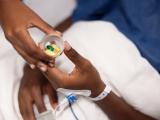A collection of environmental and public health advocacy groups are calling on the Food and Drug Administration (FDA) to take a harder line on antibiotic use in food-producing animals.
In a Sep 13 petition, The Natural Resources Defense Council (NRDC) and six other groups requested that the FDA commissioner withdraw approval of the use of medically important antibiotics in livestock and poultry for disease-prevention or growth-promotion purposes. The request specifically calls for approval to be withdrawn for seven classes of antibiotics recognized as important to human medicine: macrolides, lincosamides, penicillins, streptogramins, tetracyclines, aminoglycosides, and sulfonamides.
At issue is the role that antibiotic use in food-producing animals plays in rising antibiotic resistance, and what the FDA is doing to curtail inappropriate use.
In December 2013, the agency issued Guidance No. 213, which called on pharmaceutical companies to voluntarily remove growth promotion from the label of medically important antibiotic used in animals within 3 years. But the nonbinding recommendation, which was intended to reduce antibiotic use on farms, did allow for the continued use of those antibiotics for disease prevention and treatment, under the supervision of a veterinarian.
According to the FDA, all companies affected by the guidelines have committed in writing to making the labels changes by the end of 2016. Once the changes have been made, the antibiotics will be obtainable only with a valid order from a licensed veterinarian.
Growth promotion not the issue
The petition argues that there is no evidence that the use of medically important antibiotics in farm-producing animals has decreased since the guidance was issued. In fact, the groups claim, it has increased; they cite a 3% increase in 2014 alone. That's because, according to figures from the industry trade group the Animal Health Institute, growth promotion accounts for only 10% to 15% of total antibiotic use in livestock and poultry.
Furthermore, the petition argues, growth-promotion and disease-prevention uses are similar. Both involve administering low doses of antibiotics to entire herds or flocks over a long period through medicated feed or water, and in some cases the approved doses are identical.
And some of the antibiotics previously approved for growth promotion are also approved for disease prevention. Therefore, animal producers can essentially keep using medically important antibiotics to promote growth, but under the guise of disease prevention.
"In these situations, even if the growth-promotion indication is removed, the same or essentially the same use can continue in the name of disease prevention," the petition states.
Ultimately, the groups say that the continued use of medically important antibiotics for disease prevention in animals constitutes a threat to human health by promoting the development of antibiotic resistance, and therefore the FDA is required to withdraw approval for such use.
"By failing to take binding action to curtail these drug uses—in spite of the weighty scientific evidence of a mounting threat, the public health community's urgent calls for action, and the inadequacy of the agency's own voluntary program—FDA has abdicated its statutory duty to safeguard human health," the petition states.
Frustration with FDA program
"It certainly shows a frustration with the pace that the FDA has been going as far as changing how antibiotics are being used in livestock," Gail Hansen, DVM, told CIDRAP News. She said she understands that frustration, and agrees that the use of antibiotics for disease prevention is problematic.
"There are a lot of antibiotics that are used under the cover of prevention, and there's a lot less science there than one would like to think," said Hansen, a consultant on public health and animal policy and formerly with the Pew Charitable Trusts. "There might be some times when prevention is the right thing to do, but those times are very limited."
Hansen said she hopes that requiring antibiotics for disease prevention to be used under the supervision of a licensed veterinarian will make a difference. But Jonathan Kaplan, director of the food and agriculture program at NRDC, isn't hopeful about that.
"This industry is already supervised by veterinarians," Kaplan told CIDRAP News. "So the idea that there is going to be a sea change just because we're adding veterinary supervision is wishful thinking."
And, as both Kaplan and Hansen both point out, discouraging the use of antibiotics for growth promotion won't alleviate antibiotic resistance if livestock and poultry producers continue to use antibiotics for disease prevention at current levels.
"The program doesn't really have any teeth," Kaplan said. "It's not going to take a big bite out of routine antibiotic use."
"The bacteria really don't care," Hansen added. "Whether you call it growth promotion or prevention or treatment, if it's at the same [dosage] level it's going to have the same effect."
Still, Hansen noted, just because the FDA program hasn't yet reduced the use of antibiotics in food-producing animals doesn't mean it's not going to work at all.
The Animal Health Institute says in a statement on its Web site that the petition mischaracterizes FDA policy, how antibiotics are used currently, and how they will be used after January 1, 2017. The statement urges the FDA to reject the petition.
The FDA would not comment but told CIDRAP News it would respond directly to the petitioner.
See also:
Sep 13 Citizen petition to the FDA
Dec 2013 FDA Guidance No. 213
Sep 14 Animal Health Institute statement























